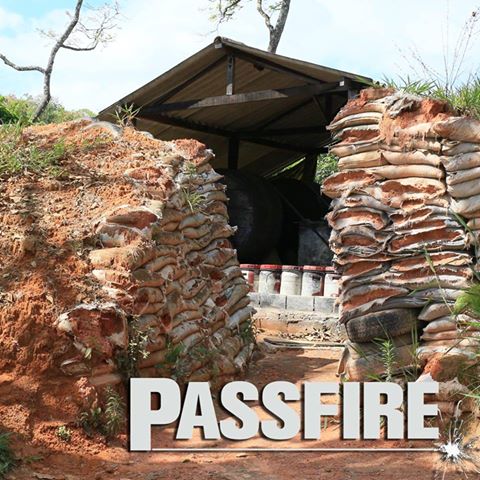
The History of Fireworks
The discovery of fireworks, or namely the formulation of gunpowder is believed to have occurred by chance approximately 2,000 years ago in China.
It is thought that a Chinese cook accidentally mixed three common kitchen ingredients:
KNO3
Sulfur
Charcoal
These were heated over a fire and dried to give a black flaky powder which burned with a loud bang when ignited. This crude, early mixture has come to be known in our modern world today as gunpowder.
The Chinese named this fascinating black powder "huo yao" ("Fire Chemical") and developed it further. The mixture was inserted into the hollow of a bamboo stick and when thrown into a fire, the gases produced by the ignited burning powder inside caused an immense build-up of pressure and blasted the tube apart. The basic firecracker was born.
Thereafter, firecrackers played an essential part to Chinese festivities - weddings, religious rituals - nay cause for celebration heard their bang due to the belief that they were thought to be powerful enough to scare off evil spirits.
It was inevitable that the time would come when people would begin to realise that these now powerful explosives could be applied to warfare. The Chinese were well aware of the killing power these explosives had and within 100 years had not only developed fire arrows (bamboo firecrackers attached to regular arrows and shot at the enemy) but even 'Ground Rats'. These consisted of propelling rats from inside the bamboo firecrackers and toward the enemy, creating a great psychological effect -scaring soldiers and causing horses to go wild.
Before long, the knowledge of fireworks began to spread to the west. It is believed that Marco Polo on one of his many trips to China transported this invention to the Middle East where European Crusaders brought it to England.
An English Scholar by the name of Roger Bacon (1214-1294) was one of the first Europeans to study gunpowder and write about it. He wrote "..... if you light it you will get thunder and lightning if you know the trick......." and realised that it was the Salt Peter (KNO3) that was the driving force behind the explosion. On the contrary, he knew his findings had the dangerous potential of completely revolutionising warfare. Therefore, he wrote his findings in code in the hope to save lives in case information reached the hands of the wrong people. This code was not deciphered for hundreds of years.
It was in 1560 that European Chemists managed to make gunpowder as explosive as possible by experimenting with the ratios of the ingredients. The final proportion was set as follows:
1) Salt Peter 75%
2) Charcoal 15%
3) Sulphur 10%
These ratios are still used today some 500 years later.
This brought the end of medieval warfare causing it to come to a close as metal armour could now be punctured by bullets and once seemingly impenetrable walls of castles could be blown to bits by cannon balls.
Credit for developing fireworks into a true art form has to be awarded to the Italians. It was they who were able to develop aerial shells that launched upward and exploded into a fountain of colour; lighting up the night sky to the enjoyment of onlookers.
These firework displays grew more and more elaborate over the years, gradually working their way into the back gardens of everyday families. For nearly 2,000 years, the only colours fireworks could produce were yellows and oranges using steel and charcoal. It was only in the 19th Century that pyrotechnicians had the technology to introduce reds, greens and blues to the night sky.
However, the field of pyrotechnics is far from fulfilled. There are problems that have been stumbled across that are yet to be solved (for example the production of forest green coloured fireworks) and certain areas of the field have not yet even been touched upon or explored.
The field of pyrotechnics has both an exciting history and future and its development continues to this day. Click here to learn more.

